Introduction: Why Learning Arabic Animal Names
Learning animal names in Arabic holds significant importance for several reasons:
When traveling to Arabic-speaking countries, knowing animal names facilitates communication. It’s especially vital in rural areas where English might not be widely spoken.
For educators and students, learning animal names in Arabic enhances the educational experience. It sparks curiosity about wildlife and learning animal names expands vocabulary and aids in language learning. Associating words with real-world objects (animals, in this case) strengthens language acquisition skills.
In this post, you will learn how to say the Arabic animal names, We have randomly selected this list and we hope it will help you remember some of these Arabic names.
We will be posting similar lists that cover other topics such as places, people, tools, transportation, and many more to come. Stay tuned for our upcoming posts!
Unraveling the Linguistic Tapestry: Animal Names in Arabic
Mammals in Arabic
Arabic animal names for mammals are as varied as the animals themselves. For example, a cat is called “قطة” pronounced as “qittah,” emphasizing the inherent grace of felines.
 |  | 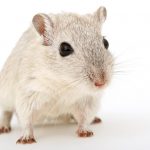 |
| Cat | qett | قط | Dog | kalb | كلب | Mouse | fa’r | فأر |
For a complete list check our post about Mammals in Arabic
Birds in Arabic
Bird names in Arabic often mimic the sounds these creatures make. The Arabic word for a rooster, “ديك” pronounced as “deek,” captures the familiar crowing of this early riser.
 |  |  |
| Sparrow| ‘Usfur | عصفور | Bird | Ṭā’ir | طائر | Penguin | betriiq | بطريق |
For a complete list check our post about Birds in Arabic
Reptiles and Amphibians in Arabic
Reptiles and amphibians have intriguing names in Arabic, often rooted in their appearance or behavior. The Arabic term for a snake, “ثعبان” pronounced as “tha’ban,” conjures the image of a sinuous, slithering creature.
 |  | 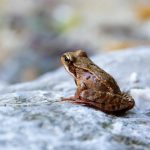 |
| Snake | tho’aban | ثعبان | Turtle | Suhulfat | سلحفاة | Frog | Difda’a | ضفدعة |
For a complete list check our post about Reptiles and Amphibians in Arabic
Aquatic Life in Arabic
Arabic names for marine animals highlight their aquatic habitat. The word for fish, “سمك” pronounced as “samak,” reflects the fluidity and elegance of these underwater dwellers.
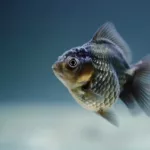 |  |  |
| Fish | Samak | سمك | Whale | hoot | حوت | Dolphin | Dolfīn | دولفين |
For a complete list check our post about Aquatic and Sea Life in Arabic
Insects and Invertebrates in Arabic
Even the smallest creatures have significant names in Arabic. For instance, the word for butterfly, “فراشة” pronounced as “farasha,” evokes the delicate and colorful nature of these insects.
 | 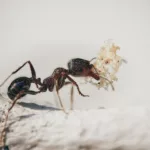 | 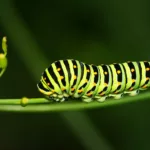 |
| Butterfly | Farasha | فراشة | Ant | Namal | نمل | Caterpillar | Yarqah | يرقة |
For a complete list check our post about Insects and Invertebrates in Arabic
Conclusion: Celebrating Linguistic Diversity
Certainly! If you found our compilation of Arabic animal names intriguing and wish to discover the names of more animals, we encourage you to engage with us through the comments section. Feel free to suggest any specific animals you’re interested in, and we will promptly respond with their Arabic translations. Your input is invaluable and helps us tailor our content to your preferences. Additionally, by subscribing to our feed, you ensure that you stay updated with our latest posts. Through this interactive platform, we aim to create a community where language enthusiasts, travelers, and nature lovers can connect and explore the beauty of languages together. Thank you for your interest and participation! Salam (peace)!
Frequently Asked Questions about Animal Names in Arabic
Q: Are animal names in Arabic significantly different from English or other languages?
A: Yes, animal names in Arabic can differ significantly from those in English and other languages due to linguistic and cultural variations.
Q: Are there specific animals in Arabic folklore that have special significance?
A: Yes, animals like the Arabian horse and the camel hold immense significance in Arabic folklore, symbolizing traits like endurance and nobility.
Q: Do Arabic animal names have specific roots or meanings?
A: Many Arabic animal names have roots in Arabic words, reflecting the physical characteristics or behaviors of the animals they represent.
Q: Are there regional variations in animal names within the Arabic-speaking world?
A: Yes, regional dialects within Arabic-speaking countries can lead to variations in animal names, showcasing the linguistic diversity of the Arab world.
Q: How do Arabic animal names contribute to the cultural identity of Arabic-speaking communities?
A: Arabic animal names are deeply intertwined with cultural identity, reflecting the environment, history, and traditions of Arabic-speaking communities and adding depth to their cultural narratives.

Hi Azra
I think the word sheep is a noun which has a plural that is the same, so it can be used for singular and plural form based on the definition provided by http://dictionary.cambridge.org/dictionary/british/sheep
and http://www.oxforddictionaries.com/definition/english/sheep
while in arabic we say
one female sheep : na’ajah or chaat
one male sheep : kharouf or kabch
a younger sheep(lamp) : haml
=========================
plural female : nia’ajon or na’ajaaton
plural male : khirfaanon or khiraafon or akbachon
plural (male& female) : ghanamon or aghnamon
i want to draw your attention that ghanam could mean goats also
Hi.
There z comment above that the meaning of the sheep z nt agreeable.yes even i have come across that
GANAMUN -SHEEP.
It’s called أسد البحر – Asadu Al-bahr
What is the Arabic translation for sea lion
please write the names of insects in arabic language and write the names of anything bigger that can see every man easily .
Clair.
I ‘ll try to answer you question by updating this article when time permit. for now, I hope the below translation helps a bit:
spider —> Ankaboot
gazelle —> ghazaalah
gorilla —> ghoorila
cub (lion) —> Shipl
For my College Arabic class we are learning the letter with animals, so thank you so much for having this. There is a Utube video he gave us as a resource called Alif is for Asad, so listed out all the animals, and tried to hear as best I could for proper pronunciation, but I am stuck on a couple. How would you say spider, gazelle, gorilla, cub? Oh, and the video had bald eagle sounding like sucker to me, but have also seen is as the nasr as you folks have it. So given I am questioning you anyways can you please explain? This is one of the advantages of online courses, but also the down fall. I can rehear as many times as I like to get my pronunciation correct, but for questions like the nasr/ sucker(just the way it sounds) it’d be nice to have physical space where I could just say hey, so what is it:) Thank you, so much for having this site, and for any and all help. Out of all the resources I have found this is the best! Especially for just vocabulary building. I love that there isn’t tons of junk to sort through, so it makes it so easy to use. Thank you so much.
hello!
for the whale, tiger,sheep I am not agree with the translation.
Hi Jad,
In the Holy Quran in Surah Yusuf, verse number 14. his brothers said:
“Qaloo lain akalahu aldeeb wanahnu Ausbatun inna ithan lakhasiroona”
The english translation I found online is “If the wolf were to devour him while we are (so large) a party, then should we indeed (first) have perished ourselves!”. So the answer to your question is “Wolf”. (see picture above).
Best,
Hi everyone, in arabic we have an animal called aldeeb. It looks like a woolf or a cayote. I was wondering if someone can tell me what it is called in english. Thank you.